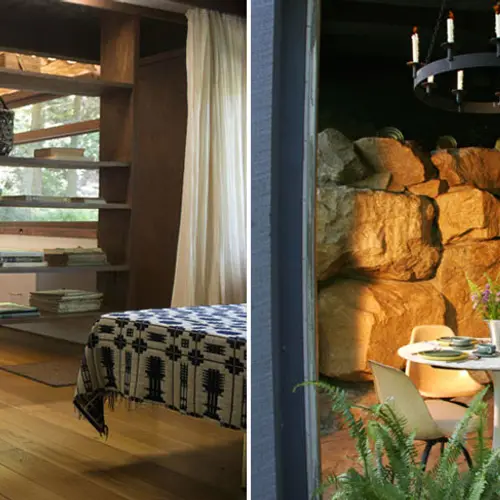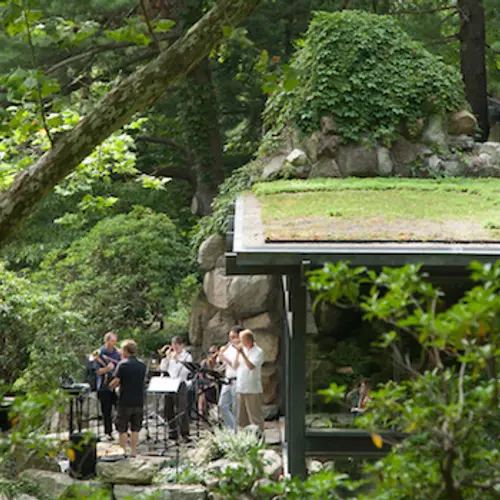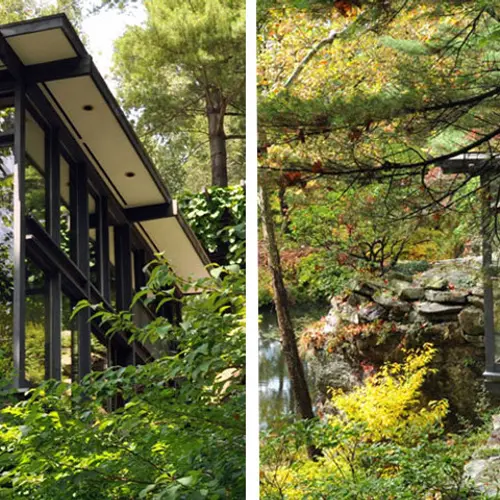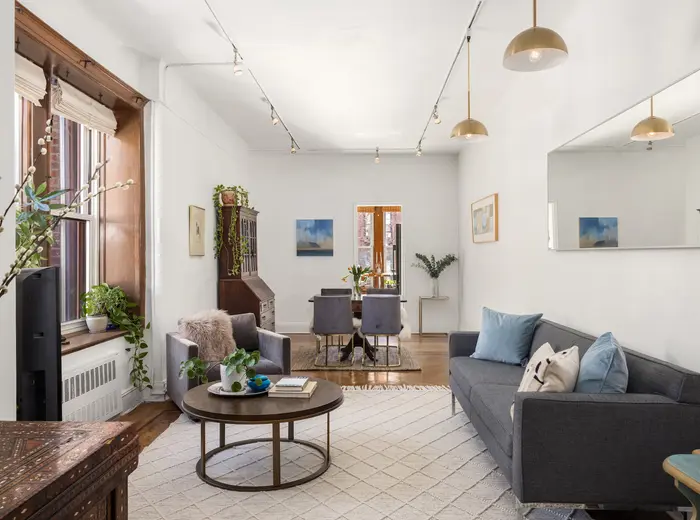Modernist Designer Russel Wright’s Hudson Valley Home Is a Rare Example of Organic Mid-Century Architecture
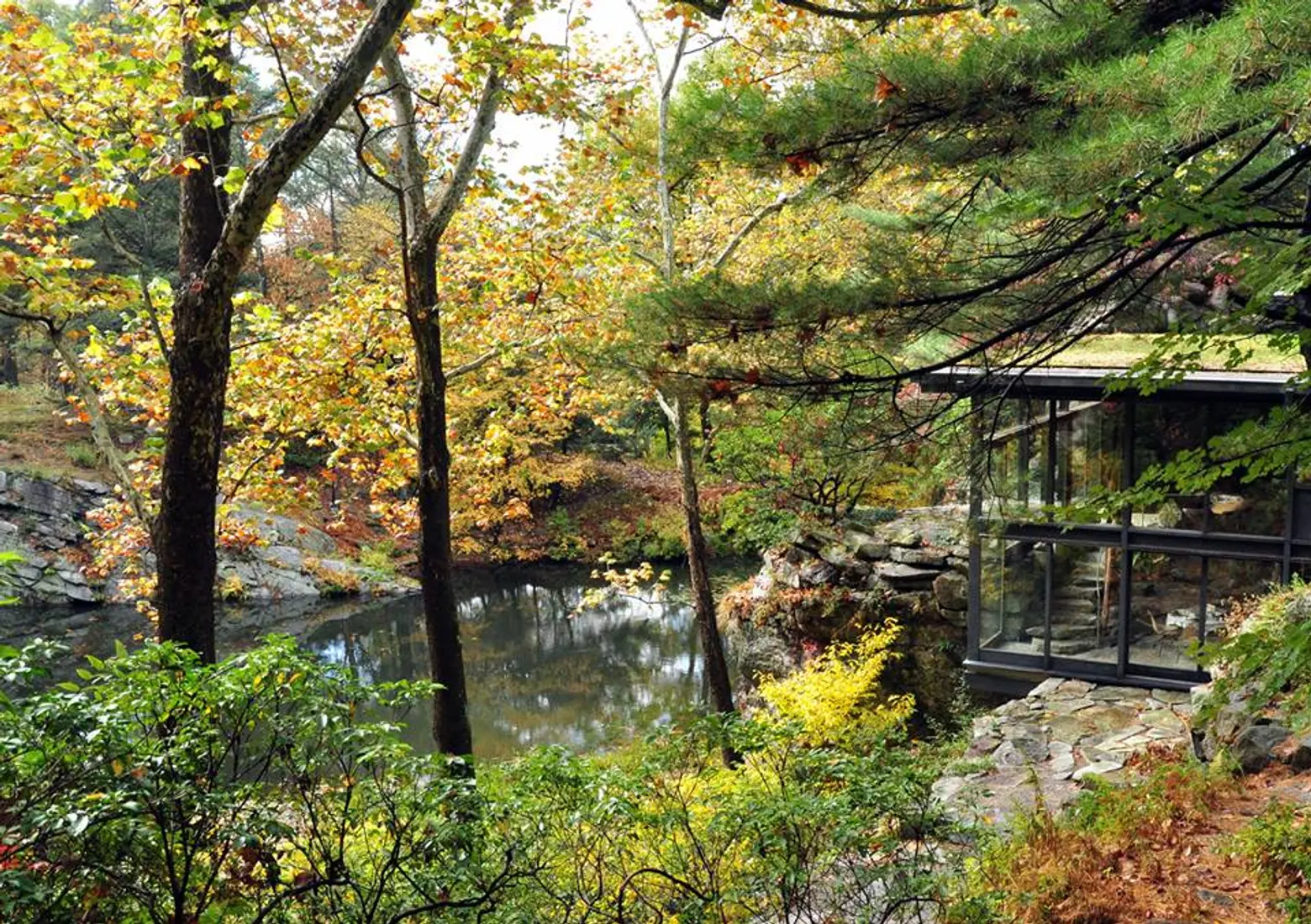
Wright’s studio, surrounded by windows and the wooded landscape. Photo courtesy of Manitoga/The Russel Wright Design Center.
Dwell Magazine recently brought to our attention this magical modernist gem, located in the Putnam County town of Garrison, New York. Manitoga, the house, studio and 75-acre wooded garden of mid-century industrial designer Russel Wright (1904-1976), is one of the few 20th century modern homes open to the public in New York State.
A firm believer in the idea that “good design is for everyone,” Russel Wright was a pioneer of the idea of modern living in America. Best known for his organic yet elegant American Modern dinnerware collection, his became a household name–one which could be found on the underside of each of the over 200 million pieces that were sold between 1939 and 1959. But the designer’s lesser-known–yet no less remarkable–effort can be seen in the home and surrounding landscape–including a large abandoned granite quarry–which were acquired by Russel and Mary Wright in 1942. Now a National Historic Landmark, and virtually unchanged save ongoing improvements and renovations, the Manitoga/Russel Wright Design Center hosts tours, hikes, performances and an artists’ residency.
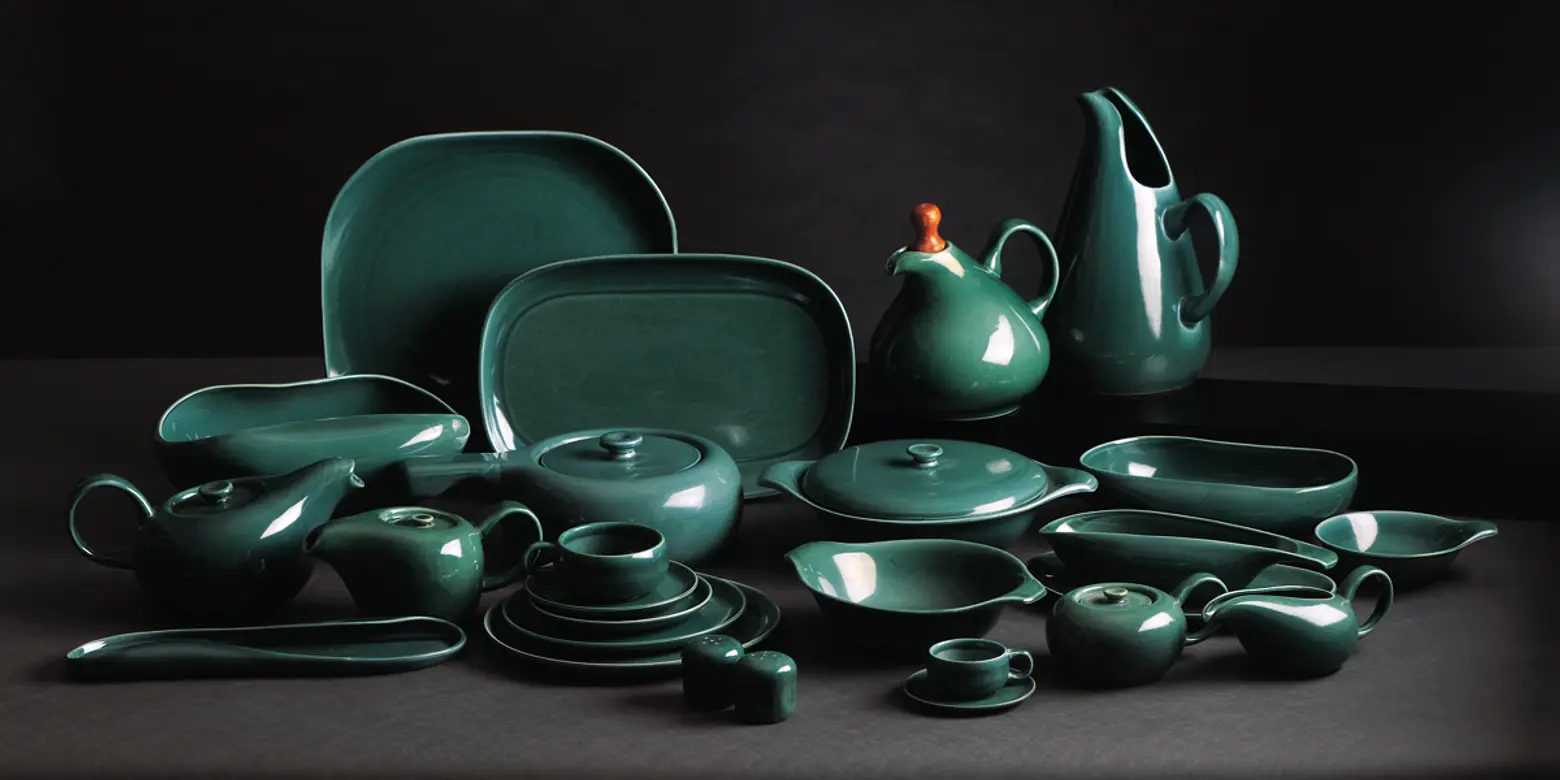 Wright’s American Modern dinnerware collection sold more than 200 million pieces from 1939 to 1959. Photo courtesy of Manitoga/The Russel Wright Design Center.
Wright’s American Modern dinnerware collection sold more than 200 million pieces from 1939 to 1959. Photo courtesy of Manitoga/The Russel Wright Design Center.
 Wright’s house, christened “Dragon Rock” by his daughter Ann. Photo courtesy of Manitoga/The Russel Wright Design Center
Wright’s house, christened “Dragon Rock” by his daughter Ann. Photo courtesy of Manitoga/The Russel Wright Design Center
The Wrights hired architect David L. Leavitt to “design a piece of organic modernist architecture that would meld with its landscape while embodying their idea of modern living.” The resulting collaboration was Dragon Rock, which Wright saw as “an exaggerated demonstration of how individual a house can be,” starting with the vine-draped wooden pergola separating the house and studio, “seductively veiling the view of the waterfall.”
Distinctive features also include a large cedar tree trunk used as both a design element and as the main structural support of house. Boulders, plantings, and stone terraces bring the outdoors inside, melding architecture and landscape. Built-in architectural artifacts designed by Wright combine nature and man-made materials in unexpected ways.

 Wright’s bedroom, next door to his studio, and dining/living area which opened directly onto the terrace. Photo courtesy of Manitoga/The Russel Wright Design Center.
Wright’s bedroom, next door to his studio, and dining/living area which opened directly onto the terrace. Photo courtesy of Manitoga/The Russel Wright Design Center.
Dragon Rock included a live/work studio and a main building. There were also “rooms” created in the natural landscape, surrounded by rocks and foliage. The home’s foundation was built without pylons, sitting directly on the earth; a fireplace made of stacked stones was created to look as if it were naturally formed.
The studio underwent extensive restoration, and was opened to the public in 2004 almost exactly as it appeared in 1963, re-created down to Wright’s white Formica desk, Herman Miller “relax” chair, an ashtray and a signature pack of Salem cigarettes.

 Photo courtesy of Manitoga/The Russel Wright Design Center.
Photo courtesy of Manitoga/The Russel Wright Design Center.
Inspired by the legacy of the local ancestral residents, the Wappinger people, Wright called his vision for the 75 acres “Manitoga” or “place of great spirit.” While there is some resemblance to Frank Lloyd Wright’s Fallingwater (built in 1936-39), it was not a direct influence (The two Wrights were not related though they were acquainted with one another).
With Manitoga, Wright took on the challenging task of helping “the average person see and understand the subtle and seemingly chaotic world of the Northeastern deciduous forest. Instead of imposing rigid forms and preconceived patterns on his landscape,” Wright “waited for the place to reveal itself to him and delighted in the complex order that unfolded over time.”
 Photo courtesy of Manitoga/The Russel Wright Design Center.
Photo courtesy of Manitoga/The Russel Wright Design Center.
 Russel Wright working in his New York City studio. Photo courtesy of Manitoga/The Russel Wright Design Center.
Russel Wright working in his New York City studio. Photo courtesy of Manitoga/The Russel Wright Design Center.
https://vimeo.com/118750488
Russel Wright: Designs for Living, Home and Woodland Garden on Vimeo. Narrated by Garrison Keillor. Produced by Hudson River Film & Video.
Find out more about visiting Manitoga/The Russel Wright Design Center here.
[Via Dwell]
RELATED:
- Following a Meticulous Renovation, Philip Johnson’s Wiley House Is on the Market for $14M
- Modern-Spotting: The Lost Eichlers of Rockland County, NY
- An Architect’s Gift from the Jet Age: The TWA Flight Center at JFK International Airport
- Happy Birthday, Frank Lloyd Wright: A Tribute to the Architect’s Built, Unbuilt and Demolished NY Works
Photos courtesy of Manitoga/The Russel Wright Design Center.






